Yuefeng Wu
Mapping Spiking Neural Networks to Neuromorphic Hardware
Sep 04, 2019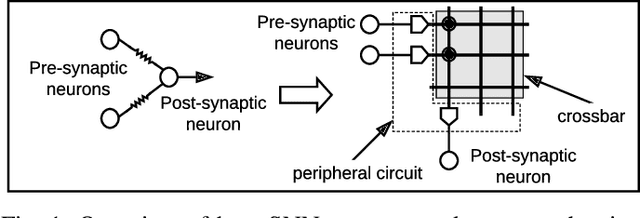
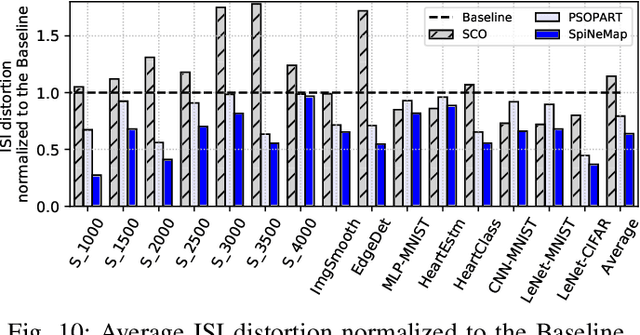
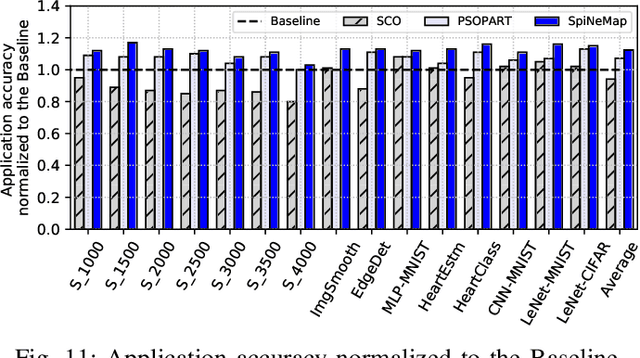
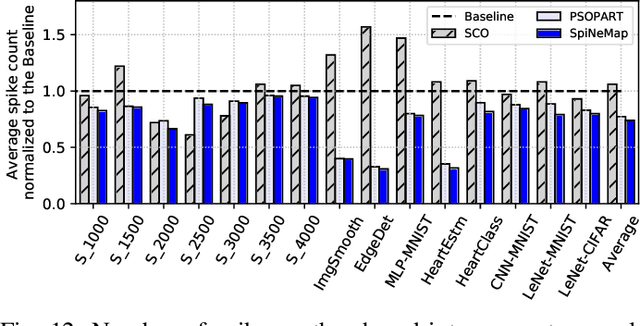
Abstract:Neuromorphic hardware platforms implement biological neurons and synapses to execute spiking neural networks (SNNs) in an energy-efficient manner. We present SpiNeMap, a design methodology to map SNNs to crossbar-based neuromorphic hardware, minimizing spike latency and energy consumption. SpiNeMap operates in two steps: SpiNeCluster and SpiNePlacer. SpiNeCluster is a heuristic-based clustering technique to partition SNNs into clusters of synapses, where intracluster local synapses are mapped within crossbars of the hardware and inter-cluster global synapses are mapped to the shared interconnect. SpiNeCluster minimizes the number of spikes on global synapses, which reduces spike congestion on the shared interconnect, improving application performance. SpiNePlacer then finds the best placement of local and global synapses on the hardware using a meta-heuristic-based approach to minimize energy consumption and spike latency. We evaluate SpiNeMap using synthetic and realistic SNNs on the DynapSE neuromorphic hardware. We show that SpiNeMap reduces average energy consumption by 45% and average spike latency by 21%, compared to state-of-the-art techniques.
Mapping of Local and Global Synapses on Spiking Neuromorphic Hardware
Aug 13, 2019
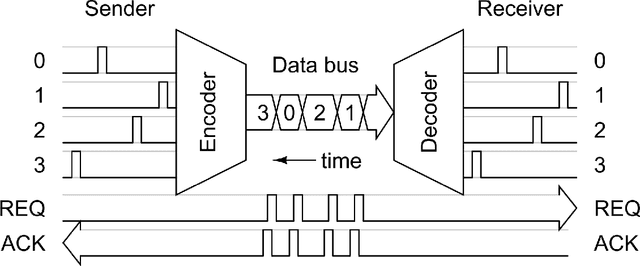
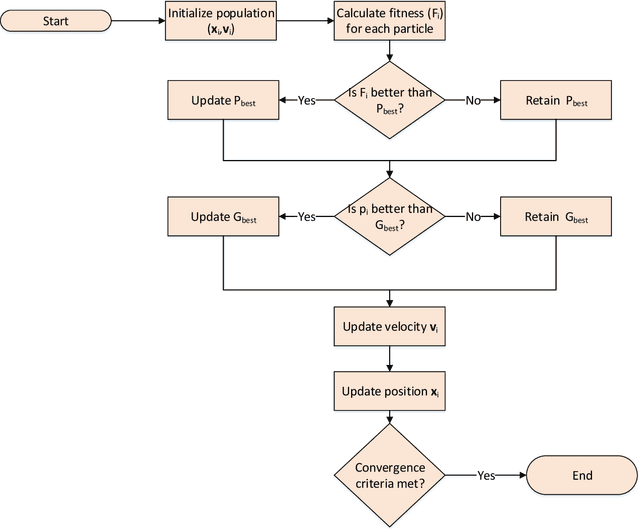
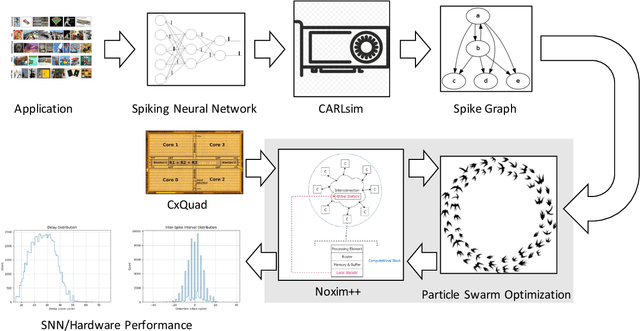
Abstract:Spiking Neural Networks (SNNs) are widely deployed to solve complex pattern recognition, function approximation and image classification tasks. With the growing size and complexity of these networks, hardware implementation becomes challenging because scaling up the size of a single array (crossbar) of fully connected neurons is no longer feasible due to strict energy budget. Modern neromorphic hardware integrates small-sized crossbars with time-multiplexed interconnects. Partitioning SNNs becomes essential in order to map them on neuromorphic hardware with the major aim to reduce the global communication latency and energy overhead. To achieve this goal, we propose our instantiation of particle swarm optimization, which partitions SNNs into local synapses (mapped on crossbars) and global synapses (mapped on time-multiplexed interconnects), with the objective of reducing spike communication on the interconnect. This improves latency, power consumption as well as application performance by reducing inter-spike interval distortion and spike disorders. Our framework is implemented in Python, interfacing CARLsim, a GPU-accelerated application-level spiking neural network simulator with an extended version of Noxim, for simulating time-multiplexed interconnects. Experiments are conducted with realistic and synthetic SNN-based applications with different computation models, topologies and spike coding schemes. Using power numbers from in-house neuromorphic chips, we demonstrate significant reductions in energy consumption and spike latency over PACMAN, the widely-used partitioning technique for SNNs on SpiNNaker.
 Add to Chrome
Add to Chrome Add to Firefox
Add to Firefox Add to Edge
Add to Edge